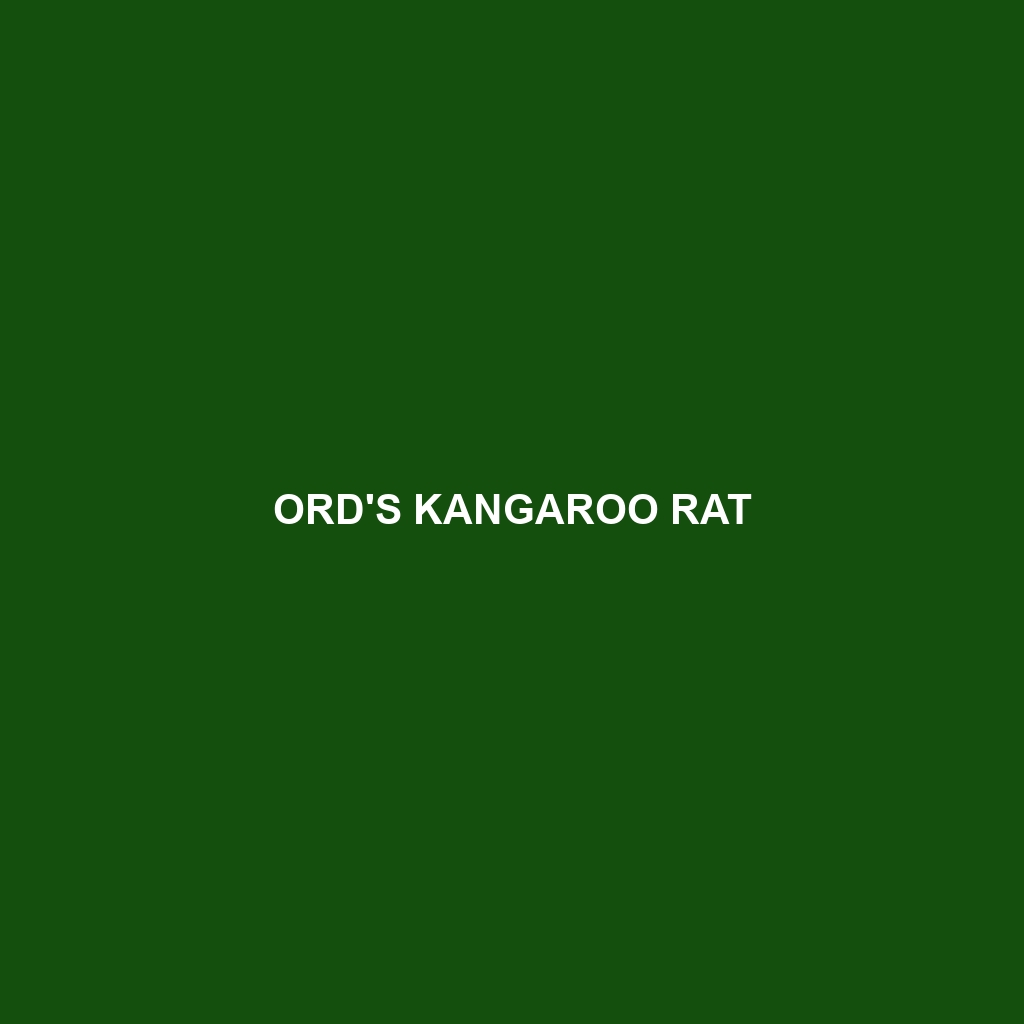Plateau Kangaroo Rat
Common Name: Plateau Kangaroo Rat
Scientific Name: Dipodomys ordii
Habitat
The Plateau Kangaroo Rat is primarily found in the arid regions of the western United States, particularly in areas such as eastern New Mexico, Colorado, and parts of Texas. They inhabit sandy or loose soil environments, including sagebrush flats, desert grasslands, and dry scrublands. These habitats provide them with both shelter and abundant food sources, which are crucial for their survival.
Physical Characteristics
The Plateau Kangaroo Rat is characterized by its small size, typically measuring around 10-12 inches in total length, including its long tail. Their fur is soft and ranges from light brown to gray, providing excellent camouflage in their natural habitat. Notable features include large hind legs adapted for jumping, and large eyes which enhance their night vision. Their distinctive long, tufted tail not only aids in balance but also assists in communication and thermoregulation.
Behavior
Plateau Kangaroo Rats exhibit a range of fascinating behaviors. They are primarily nocturnal, which means they are most active at night when they forage for food. Their burrowing habits are significant, as they create extensive underground systems to escape extreme temperatures and predators. These charming rodents are also known for their remarkable ability to go long periods without drinking water, obtaining moisture from the seeds they consume.
Diet
The Plateau Kangaroo Rat primarily feeds on seeds, grasses, and other plant materials. They have a particular preference for seeds from various grasses, which they often store in their burrows. Their diet is crucial for their hydration needs, as they mainly rely on the moisture content of their food rather than drinking water directly, making them well-adapted to their dry habitats.
Reproduction
The breeding season for the Plateau Kangaroo Rat typically occurs in the spring, with females capable of producing multiple litters each year. A litter may consist of 2 to 6 offspring. After a gestation period of about 30 days, the young are born blind and hairless but are quickly developed by their mothers. Parental care is notable, as the mother remains with the young until they are weaned, teaching them essential survival skills.
Conservation Status
The conservation status of the Plateau Kangaroo Rat is currently listed as vulnerable due to habitat loss and degradation from agricultural and urban development. Conservation efforts are necessary to protect their dwindling populations and restore their natural habitats, which are critical for maintaining biodiversity.
Interesting Facts
One fascinating fact about the Plateau Kangaroo Rat is its ability to leap up to 6 feet in a single bound, a trait that helps it evade predators. Additionally, the noise produced by their vocalizations during mating season is an important aspect of their social behavior, showcasing their communication skills.
Role in Ecosystem
The Plateau Kangaroo Rat plays a crucial role in its ecosystem as a seed disperser, aiding in plant reproduction and diversity. Their burrowing activities enhance soil aeration and contribute to nutrient cycling. Furthermore, they serve as prey for various predators, including birds of prey and snakes, thereby maintaining the balance within their ecological community.
